Requirements Traceability Matrix: Every Project Manager Must Know
Does managing your project feel like a maze? Well, there are tools, software, and strategies that can help you simplify your path. If your project is huge and you have incurred multiple stakeholders along with a vast team, then it would definitely be difficult for you to run your project smoothly. We understand, though! Hence, we have come up with a top-notch solution that cannot only help you increase your results but also help you streamline your task and race its completeness.
With the requirement traceability matrix, you can get it all done without any hassle. But what’s the real magic of an RTM? Well, it’s all about connection. This matrix shows how requirements relate to other artifacts, demonstrating that all requirements have been met. It’s like a roadmap, documenting requirements, test results, and issues, proving that you’ve taken all necessary actions. Read this guide all the way through its conclusion and get started with your project!
What is a Traceability Matrix?
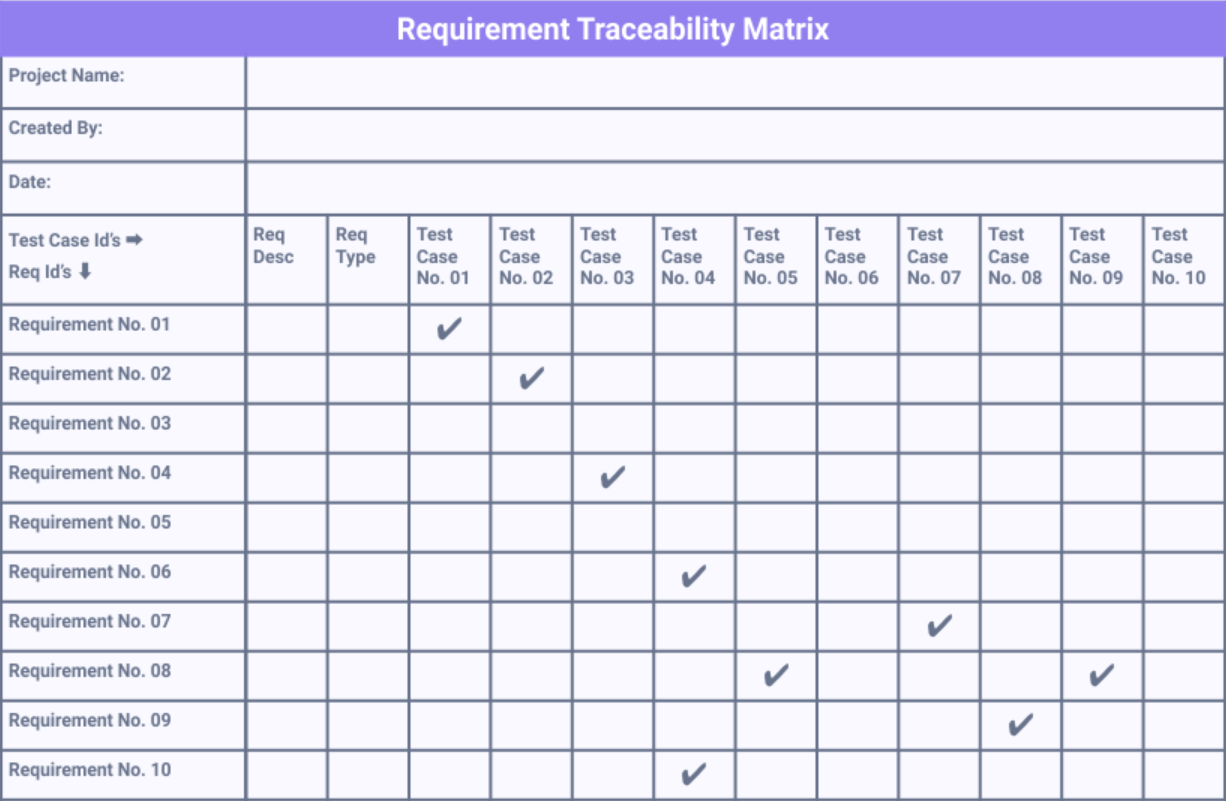
A traceability matrix (TM) sits at the heart of efficient project execution. Essentially, a traceability matrix is a document that co-relates two baselined documents, forging a many-to-many relationship comparison that checks the completeness of the connection.
The primary role of a TM are:
- Keep track of requirements
- Ensure the fulfillment of project requirements
A TM stands out due to its versatility and detail-oriented approach. Increased control through tracking enhancements, alterations, or deletions allows you to handle project requirements adeptly.
Now, let’s focus on differentiating a requirements traceability matrix (RTM) from a generic traceability matrix. An RTM, a more specific type of TM, shows how requirements relate to other artifacts. It’s an efficient way to manage project requirements, demonstrating that all prerequisites have been met. Your RTM becomes a detailed blueprint, furnishing evidence of requirements, test results, and issues and verifying that every necessary action has unfolded as planned.
There are specific tools available for creating and managing a requirements traceability matrix (RTM). You can even make use of requirements traceability matrix templates, which can ease your work of illustrating the relationship between requirements and their corresponding test cases. Let’s take a quick look at different types of traceability matrices:
Table 1. Types of Traceability Matrix
| Traceability Matrix Type | Description
|
|---|---|
| Backward (or reverse) | Mapped test cases with requirements to ensure no additional, unnecessary test cases |
| Bidirectional | Combination of forward and backward traceability matrices, verifying requirements and test cases in both directions |
Bringing it all together, understanding the Rolodex of traceability matrices – including the requirements traceability matrix in project management, comes as an irreplaceable asset in honing your project management skills. While creating a traceability matrix may initially seem daunting, knowing its purpose and how it functions can open doors to exciting opportunities.
What is the Requirements Traceability Matrix (RTM)?
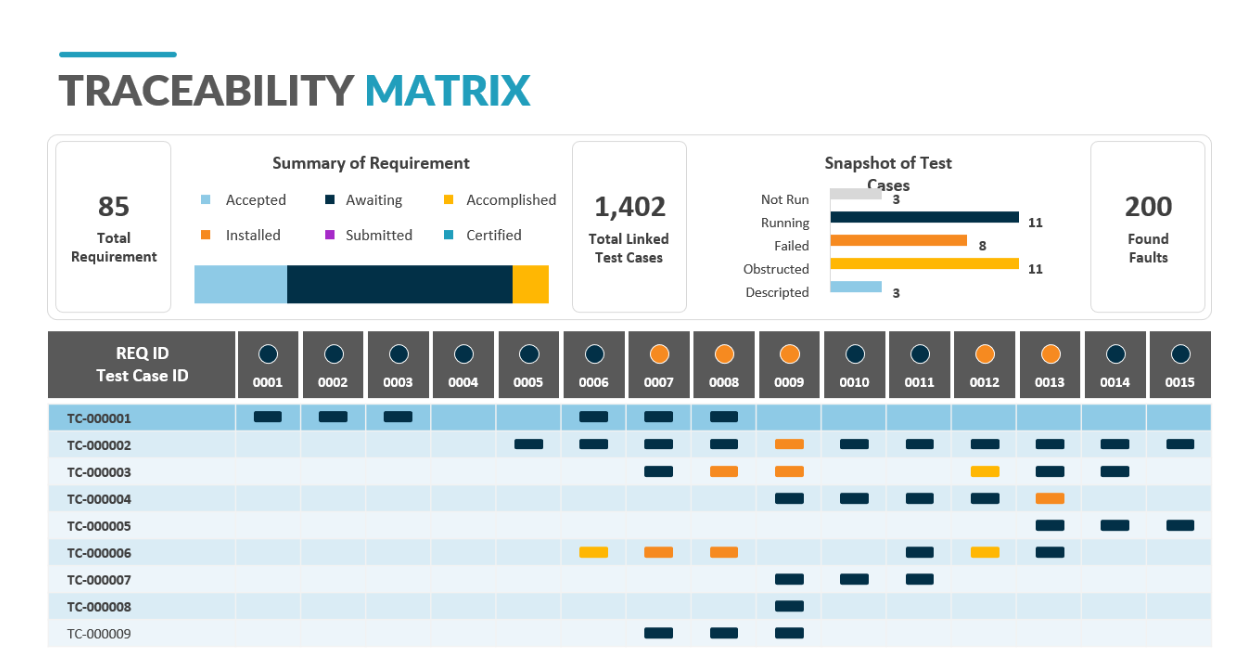
An RTM is a vital table that tracks a project’s requirements and their connectivity with other project artifacts. It demonstrates how various requirements relate to different elements in a project, ensuring that every requirement has been fulfilled. Think of the RTM as a checklist, monitoring all project requirements to help prevent costly errors in project execution. When you’re dealing with complex projects, it’s easy for essential components to get overlooked. The RTM acts as your safeguard, assuring that nothing falls through the cracks.
Variations of RTMs exist. You’ll often hear about types such as the backward traceability matrix or bidirectional traceability matrix. These are all related to the core concept but focus on different aspects of requirements verification and interconnections. You may wonder what a requirements traceability matrix template is. It’s simply a predefined format or structure for your RTM. Templates can save you precious time and ensure that you’re correctly tracking all the data needed.
Benefits of RTM
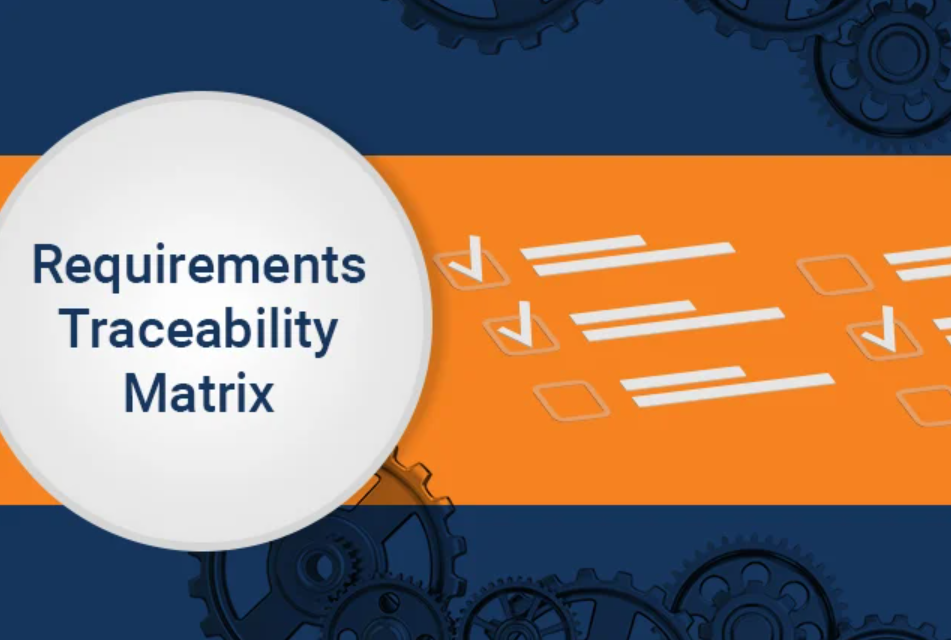
Recognizing the wealth of advantages brought about by a requirements traceability matrix (RTM) is essential. Embracing this project management tool in your approach can guide you toward more streamlined, efficient operations. Now, let’s delve deeper into the specifics of these benefits:
Versioning is Easier and More Effective
One significant advantage of the RTM is its ability to simplify versioning. The traceability matrix equips you with the right tools to monitor progressive changes in project requirements effectively. You’ll note how it’s easier to update your project requirements and see the changes made over time. Plus, it gives you the assurance that no detail gets overlooked. It’s the kind of oversight that your project needs to ensure its continuous improvement and success.
Don’t Forget About Documentation
Next up is documentation. Documenting each step of your operations may seem like a boring process, and you’re not wrong. But here’s where the requirements traceability matrix template steps in. The template structures your documentation process, making it faster and more productive. Imagine having a systemized way of recording everything — from your project’s most essential details to the most intricate nuances of your operations. That’s what the RTM brings to the table! It simplifies the documentation process while ensuring you’re not missing crucial data.
Tackling Defects
Lastly, but definitely not least, RTMs help tackle defects. This is a critical stage where most projects falter; however, an RTM can quickly turn the tables. In identifying the areas riddled with issues, RTMs allow you to direct your efforts where they’re needed most. You’re not only saving valuable time, but you’re also ensuring that defects are dealt with effectively. Having a requirements traceability matrix example at hand can give you a clearer picture of how this process works.
Having these benefits in mind, it’s crystal clear how integral the RTM is in project management. When it comes to maximizing efficiency, reducing errors, and ensuring success, the requirements traceability matrix is a tool you can’t afford to overlook.
What Are The Different Types of Traceability Matrix?
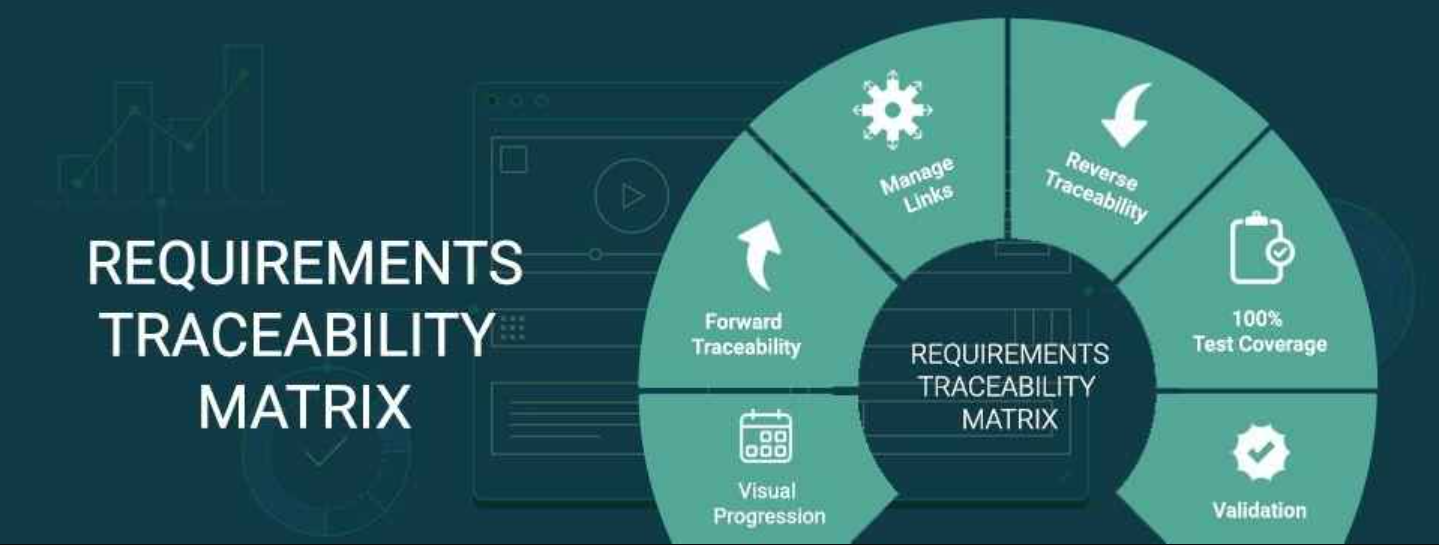
These types include forward traceability, backward traceability, and bi-directional traceability. These are designed to give a diverse perspective on how project requirements and test cases intersect. Let’s delve a little deeper into what each type entails.
Forward Traceability
Forward traceability is used to observe the requirements linked with the test cases. This type of traceability matrix allows you to ensure that every necessity has an allocated test case and that the project’s path is headed in the right direction. It’s a tool that aids in the successful navigation of project trajectory.
Backward Traceability
On the other hand, backward traceability works to map test cases with the related requirements. This is done to prevent overextending the scope of work by creating test cases that can’t be mapped back to the original requirements–known in the industry as avoiding scope creep. Within this matrix format, you can confirm that there are no redundant test cases beyond your initial requirements, making it more streamlined and efficient.
Bi-Directional Traceability
As its name suggests, the bi-directional traceability matrix is a combination of forward and backward traceability. This advanced format allows you to verify the requirements and the test cases in both aspects. Each requirement can be mapped forwards to its corresponding test case and backwards from a test case to its requirement. This comprehensive view ensures that your project’s requirements are adequately covered and validated, making the bi-directional traceability matrix incredibly valuable for effective project management.
What Is Test Coverage?
Test coverage is a metric that specifies which parts of the product’s functionality have been tested. It’s about ensuring that every bit of the application gets assessed and validated, with the end objective being 100% test coverage. If it’s not tested, it’s not covered. That’s where requirements traceability matrix in project management comes into play.
The requirements traceability matrix ensures you’ve got all your bases covered. To put it simply, the RTM is a method of mapping and tracing all client requirements to test cases and discover defects. It’s a living document that helps you guarantee no test case is missed and that every element of the application is tested.
Types of Requirement Specifications
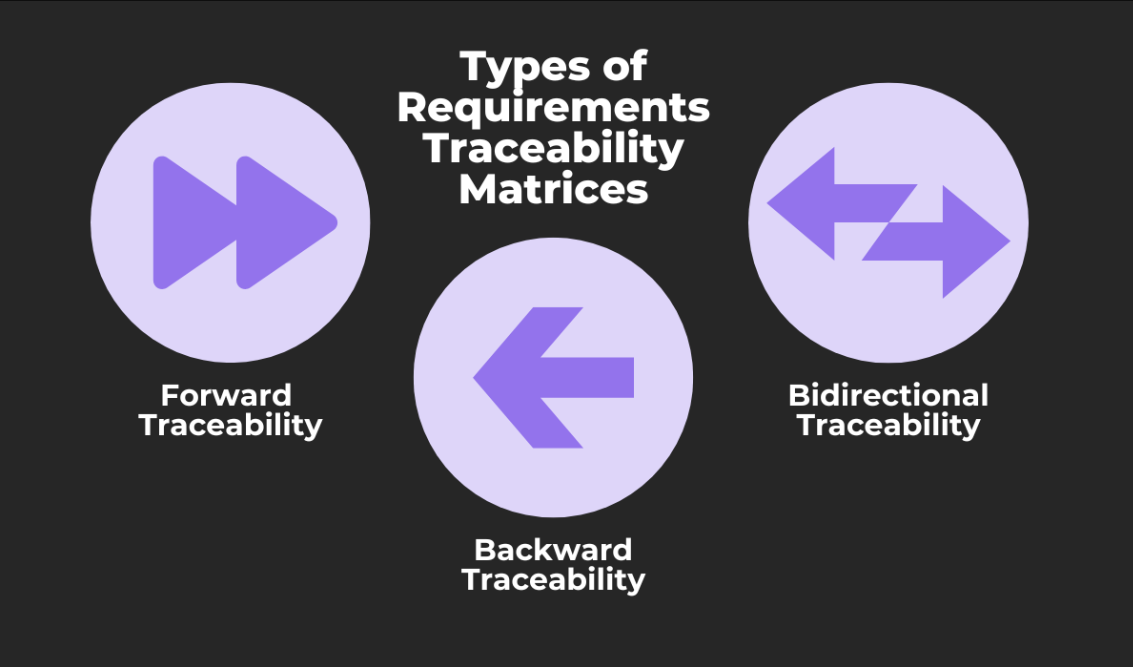
Understanding requirements is crucial to gaining a full grasp of your product’s RTM. Several types of documents capture different requirement specifications.
1) Business Requirements
This document contains high-level business needs or initiatives in understandable language for stakeholders. It’s the go-to reference point for the other, more detailed requirement documents.
2) Software Requirements Specification Document (SRS)
Providing in-depth descriptions of software functionality, performance, UI, and more, the SRS is the bedrock for your product requirements. It’s a key reference for forming your requirements traceability matrix template.
3) Project Requirement Documents (PRD)
While SRS keeps track of software requirements, PRD documents requirements related to the project lifecycle. This could include project planning, deliverables, timelines, and resources.
4) Use Case Document
Use Case documents describe system behavior from the user’s point of view. They are instrumental in defining both “happy path” scenarios and potential issues for your requirements traceability matrix.
5) Defect Verification Document
Every functional defect found, logged, and rectified throughout the testing phase is kept on record in this document. It’s vital for regression testing and plays a significant role when preparing your requirements traceability matrix example.
6) User Stories
While not formally a document, user stories are an agile way to capture product functionality from the perspective of the end-user. They’re brief, concise, and user-centered, making them an integral part of the requirements gathering and a key piece in the creation of your RTM.
Upon a complete grasp of understanding these requirements, you’re better equipped to create an effective RTM to streamline your project management.
Why Do You Need a Requirements Traceability Matrix Template?
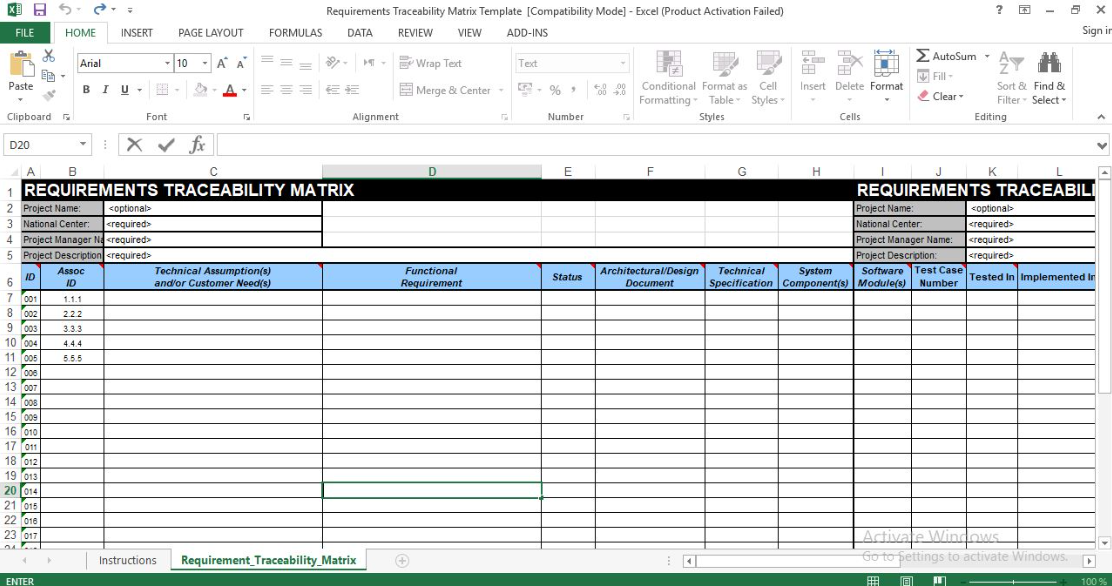
The RTM is a tool designed to keep your project on course. It keeps crucial project requirements organized and helps ensure that your final product aligns perfectly with project stipulations every time. But why settle for a makeshift solution when you can employ a ready-made, comprehensive template?
- The Requirements Traceability Matrix template eases your navigation through the world of project requirements. For example, it can help you understand technical specifications or unique user requirements even before the onset of development.
- A key advantage of using a ready-made RTM template? It’s an efficient “fill in the blanks” process. Populate the template with requirements, corresponding test cases, relevant test results, and any issues encountered. The RTM, living and evolving, serves as a constant, trustworthy resource for your project.
- RTM isn’t a stagnant entity. As a project gains momentum, requirements may shuffle around – some might be dropped, others added. It’s a dynamic landscape where the only constant is the Requirements ID number. Any changes? They’re efficiently reflected in the RTM.
When Should You Use a Requirements Traceability Matrix Template?
Navigating a project’s requirements isn’t always an easy task. It becomes even trickier when you’re dealing with various stakeholders – each with their own needs and demands. Here’s where you’ll find the Requirements Traceability Matrix (RTM) handy. Here are scenarios when an RTM template becomes vital:
- Are you a new project manager? If you’re still getting used to the world of project management, an RTM template will help you learn the ropes. It gives you a calculated approach to manage and navigate through project requirements.
- Are you dealing with a complex project? When a project carries complex or vast requirements, tracking everything can become herculean. An RTM template assists in documenting and tracking every requirement – ensuring nothing slips through cracks.
- Have an important project on the table? For high-stake projects, leaving requirements to chance can lead to project failure. An RTM template guarantees a systematic approach, ensuring all requirements correctly meet project standards.
Conclusion
So, you’ve seen the power and potential of a Requirements Traceability Matrix (RTM) in managing your project requirements. In the above guide, we have explored everything about RT from its crucial role in the successful delivery of complex or high-stakes projects to aligning requirements and stakeholders. Remember, it’s all about streamlining your processes and achieving your project goals. So don’t hesitate to leverage the RTM template. It’s time to make your project management more efficient, effective, and successful.
Frequently Asked Questions
Q1. What is the function of a Requirements Traceability Matrix (RTM) in project management?
An RTM is an essential tool in project management that helps in tracking and documenting requirements. The matrix links the project’s requirements to the test cases, ensuring each requirement is systematically tested and verified. RTMs are particularly beneficial for complex projects with multiple requirements and stakeholders.
Q2. How does an RTM template enhance the efficiency of a project manager?
An RTM template streamlines project management processes by providing a systematic approach to managing project requirements. It improves efficiency by assisting project managers in tracking project progress, fulfilling requirements, and identifying any potential issues.
Q3. Why should a project manager consider using an RTM?
A project manager dealing with complex projects, high-stakes projects, or multiple requirements and stakeholders should consider using an RTM. It ensures that every requirement is tested properly, thus minimizing the risks of missing project goals.
Q4. What benefits does an RTM offer to project management?
The RTM brings multiple benefits, including systematic tracking and documentation of project requirements, assurance of proper testing of each requirement, risk mitigation, and enhancement of project management efficiency.
Q5. How does an RTM contribute to ensuring project success?
An RTM contributes to project success by acting as a systematic tool for managing project requirements. It ensures that all requirements are tracked and tested, thus ensuring they’re met, leading to a successful project completion.
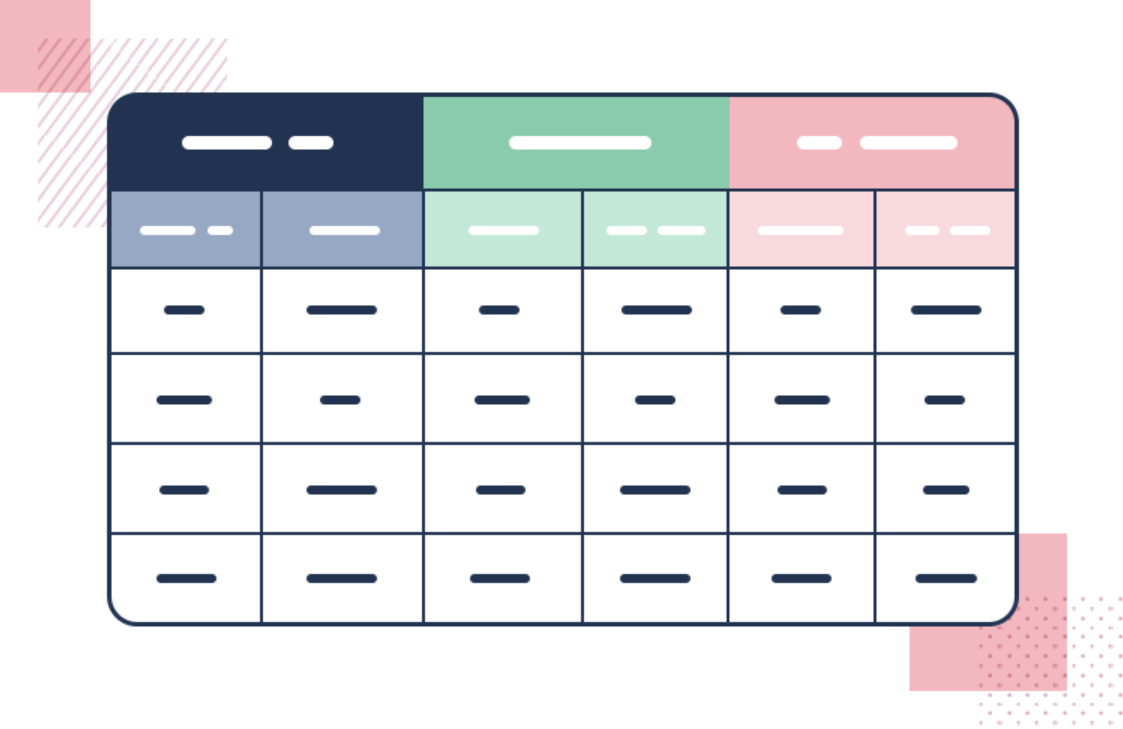
Leave a Reply